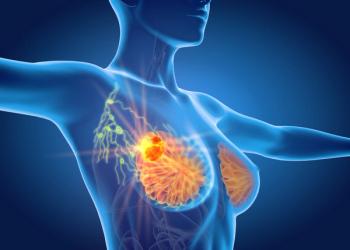
Oncology NEWS International
- Oncology NEWS International Vol 11 No 1
- Volume 11
- Issue 1
Concurrent Chemo/Radiotherapy in Oropharynx Cancer
SAN FRANCISCO-Chemotherapy given concomitantly with radiotherapy improves disease-free survival rates in patients with stages III and IV oropharynx carcinoma, according to final results of the 94-01 GORTEC study. The findings were presented at the 43rd Annual Meeting of the American Society for Therapeutic Radiology and Oncology (ASTRO plenary 2).
SAN FRANCISCOChemotherapy given concomitantly with radiotherapy improves disease-free survival rates in patients with stages III and IV oropharynx carcinoma, according to final results of the 94-01 GORTEC study. The findings were presented at the 43rd Annual Meeting of the American Society for Therapeutic Radiology and Oncology (ASTRO plenary 2).
After a median follow-up of 63 months, the 5-year disease-free survival rate was 30% for patients who received chemotherapy plus radiotherapy vs 15% for those who received radiotherapy only (P = .025). The increase in survival rates, however, was accompanied by an increased incidence of grade 3-4 toxicity.
"Adding chemotherapy to radiation therapy does improve local control and does improve disease-free survival," said Jean Bourhis, MD, of the Institut Gustave-Roussy, Villejuif, France. "However, there is a price because both acute and late toxicity were enhanced."
Dr. Bourhis presented the results on behalf of Dr. Gilles Calais, of the Department of Radiation Oncology, Hôpital Bretonneau, Tours, France, who was not able to attend the ASTRO meeting. Dr. Calais is the lead author of the study.
Between July 1994 and September 1997, this phase III multicenter study enrolled 226 European patients with locally advanced stage III/IV oropharynx carcinoma. Patients received radiation therapy only (70 Gy in 35 fractions) or radiation therapy plus three cycles of a 4-day course of carboplatin (Paraplatin) 70 mg/m²/d and fluorouracil 500 mg/m²/d, given on days 1, 22, and 43.
The two arms were balanced for patient age, sex, stage, performance status, histology, and primary tumor site. The most common tumor sites were the tonsils and the base of the tongue.
Although it improved survival, chemoradiotherapy also resulted in an increased incidence of acute and late toxicity. The rate of grade 3-4 mucositis was 67% in patients treated with concomitant chemoradiation vs 36% for those who received radiation therapy only. There was one toxicity-related death in the combination arm.
The incidence of cervical fibrosis was 27% in patients who received concomitant chemoradiotherapy vs 12% in those who received radiation therapy only (P = .04). Rates for dental side effects were 37% and 18%, respectively (P = .01). The rates for xerostomia and peripheral neuropathy, however, did not differ between the two arms.
The discussant, K. Kian Ang, MD, PhD, of M.D. Anderson Cancer Center, noted that this study is one of four showing that "concurrent chemoradiation has improved survival." While Dr. Ang was concerned about the increased incidence of toxicity that occurs during concomitant chemoradiation, he noted that "it is probably better to be alive with some toxicity than the alternative."
However, this increased risk of toxicity, along with the decreased but still significant mortality rate, led Dr. Ang to conclude, using a baseball analogy, that "while maybe we have hit some home runs, we still have not won the division title, let alone the World Series."
Articles in this issue
almost 24 years ago
ODAC Sends Mixed Message on New Gliadel Wafer Indicationalmost 24 years ago
ONCC Certification Test Results Are Announcedalmost 24 years ago
Rituximab Ups Survival in Aggressive and Indolent NHLalmost 24 years ago
Topotecan Used in Aggressive Front-Line Therapy for SCLCalmost 24 years ago
Depsipeptide Shows Activity in T-Cell Lymphomaalmost 24 years ago
FDG-PET Useful in Newly Diagnosed and Recurrent NSCLCalmost 24 years ago
Adjuvant Anastrozole Superior to Tamoxifen in Huge ATAC Breast Cancer Trialalmost 24 years ago
ODAC Backs Adding HER-2 DNA Test to Herceptin Package Insertalmost 24 years ago
FDA and VA Plan Joint AIDS Studyalmost 24 years ago
Breast Conservation Increases With On-Site Radiation UnitNewsletter
Stay up to date on recent advances in the multidisciplinary approach to cancer.
















































































